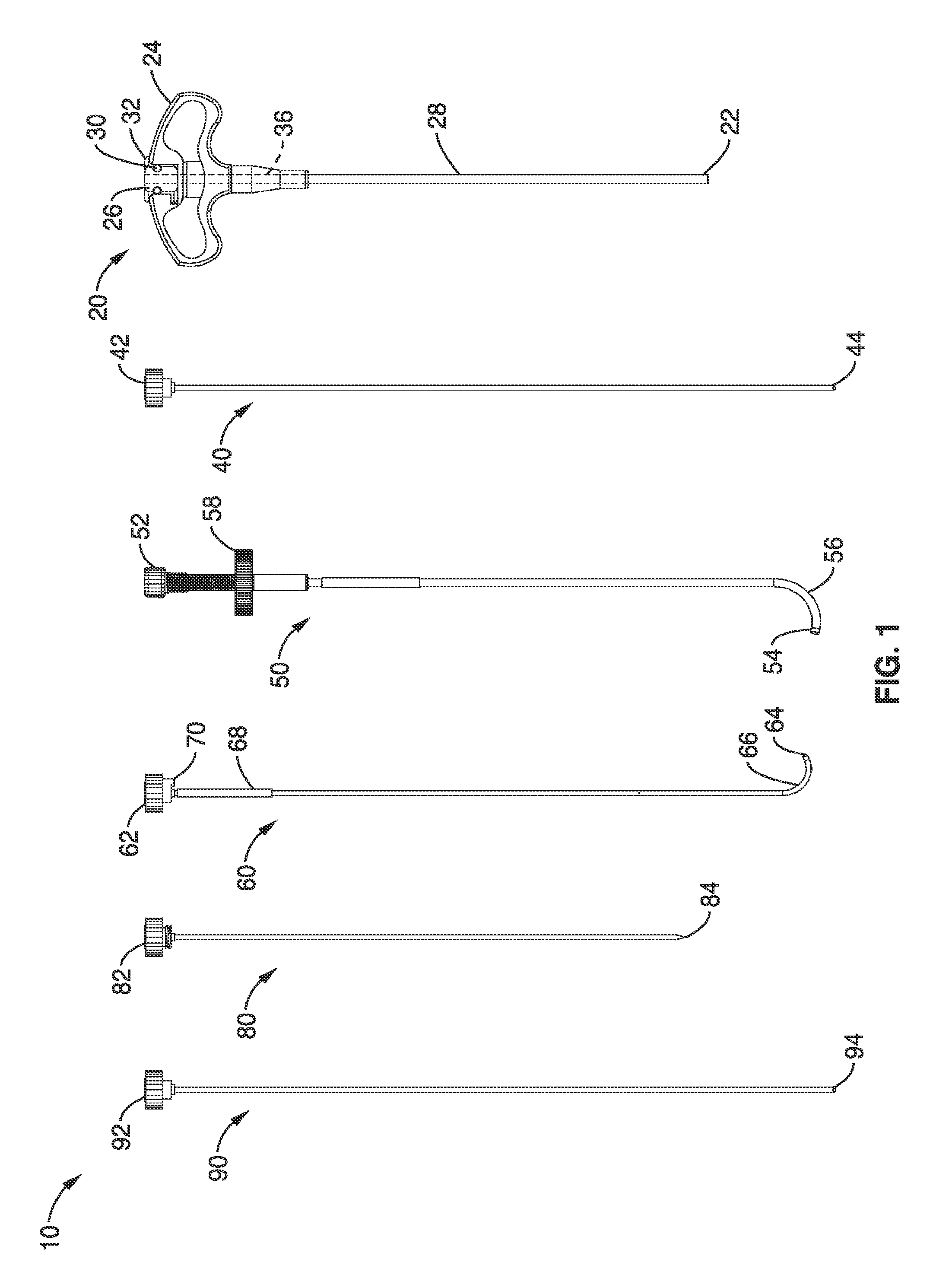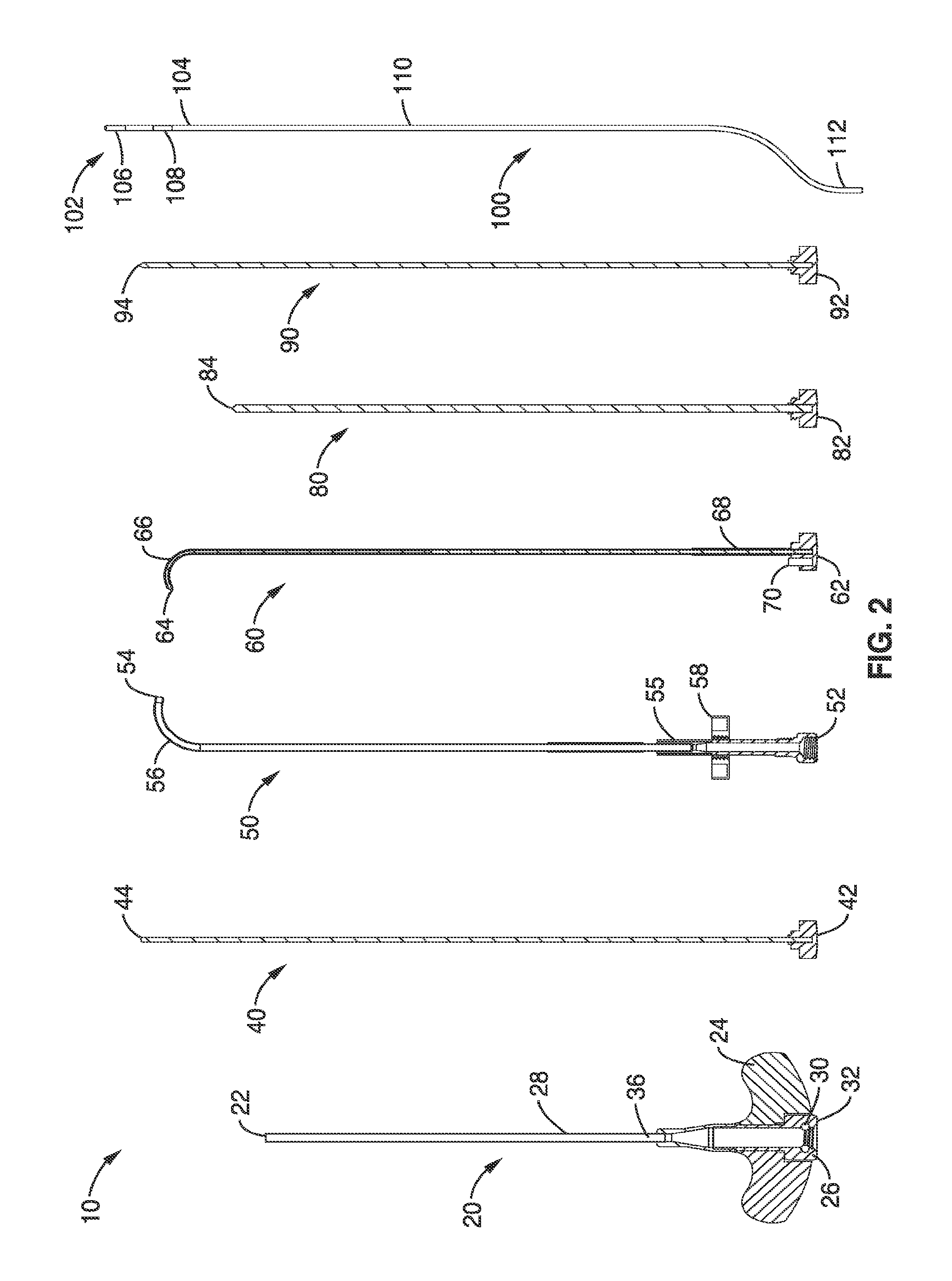Vertebral treatment
a technology for vertebrae and treatment, applied in the field of vertebral treatment, can solve the problems of difficult access to the posterior midline section of the s1 segment of the spine, difficult to place a probe in the vertebrae, and difficulty in navigating a probe in the bone, so as to minimize the volume of bone tissue and modulate the bvn with substantial certainty
- Summary
- Abstract
- Description
- Claims
- Application Information
AI Technical Summary
Benefits of technology
Problems solved by technology
Method used
Image
Examples
examples
[0282]The following Examples illustrate some embodiments of the invention and are not intended in any way to limit the scope of the disclosure. Moreover, the methods and procedures described in the following examples, and in the above disclosure, need not be performed in the sequence presented.
example i
[0283]This example describes an embodiment of a method of use of one of the dual probe embodiments.
[0284]First, after induction of an appropriate amount of a local anesthesia, the human patient is placed in a prone position on the table. The C-arm of an X-ray apparatus is positioned so that the X-rays are perpendicular to the axis of the spine. This positioning provides a lateral view of the vertebral body, thereby allowing the surgeon to view the access of the apparatus into the vertebral body.
[0285]Next, a cannulated stylet comprising an inner stylet and an outer cannula are inserted into the skin above each of the respective pedicles so that the distal tip of each stylet is in close proximity to the respective pedicle.
[0286]Next, the probe is advanced interiorly into the body so that the stylet tips bores through the skin, into and through the pedicle, and then into the vertebral body. The stylet is advanced until the tips reach the anterior-posterior midline of the vertebral bod...
example ii
[0289]This example describes the efficacy of heating a large zone of a vertebral body with an embodiment of a bipolar energy device. In accordance with one embodiment, the testing procedure was performed as follows:
[0290]A pair of probes was inserted into a vertebral body of an ovine animal model so that the tips of the electrodes were located substantially at the midline and separated by about 4 mm. Each electrode had a cylindrical shape, a length of about 20 mm, and an outer diameter of about 1.65 mm (16 gauge) to produce a surface area of about 100 mm2.
[0291]Next, and now referring to FIGS. 47A and 47B, thermocouples 0-14 were placed within the vertebral body at the 15 locations. Thermocouples 0-4 were placed halfway between the electrode tips and were separated by a distance of 2 mm. Thermocouples 5-9 were placed about at the midpoint between the probe tips, and were vertically separated by a distance of 2 mm Thermocouples 10-14 were placed along the distal portion of the probe ...
PUM
 Login to View More
Login to View More Abstract
Description
Claims
Application Information
 Login to View More
Login to View More - R&D
- Intellectual Property
- Life Sciences
- Materials
- Tech Scout
- Unparalleled Data Quality
- Higher Quality Content
- 60% Fewer Hallucinations
Browse by: Latest US Patents, China's latest patents, Technical Efficacy Thesaurus, Application Domain, Technology Topic, Popular Technical Reports.
© 2025 PatSnap. All rights reserved.Legal|Privacy policy|Modern Slavery Act Transparency Statement|Sitemap|About US| Contact US: help@patsnap.com



